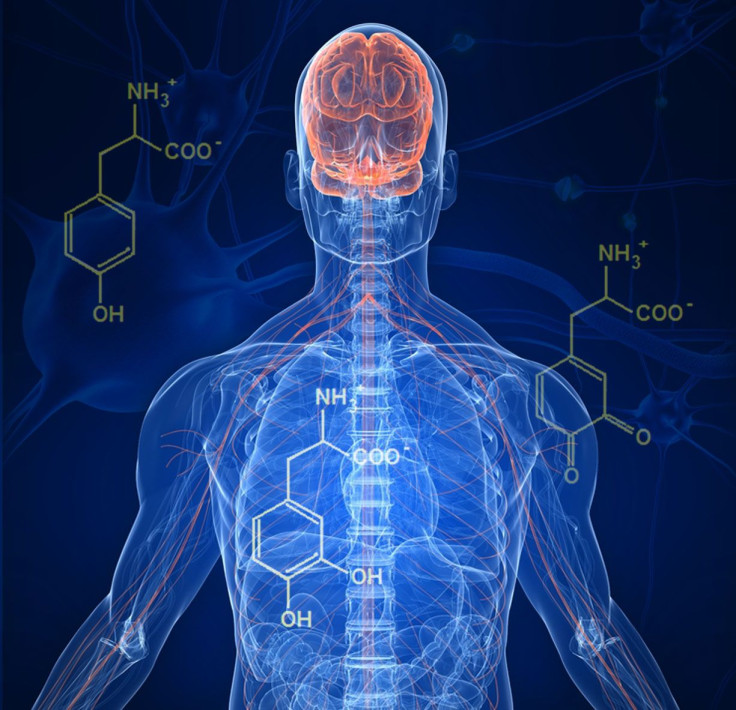Scientists Develop New Parkinson's Disease Drug Treatment That Attacks Symptoms On Two Fronts

In a recent study, scientists from The Scripps Research Institute (TSRI) have identified and designed the compound that could counter Parkinson's disease in two ways at once. In the study, published in the journal ACS Chemical Biology, scientists found a dual receptor, which is two compounds in a single molecule, that attacks a pair of protein enzymes, LRRK2 and JNK, that are closely associated with the development of Parkinson's disease.
Genetic testing has shown that patients with mutations in the LRRK2 enzyme have an increased risk of developing Parkinson's disease, and the JNK enzyme has been shown to play an important role in neuron survival in several neurodegenerative diseases.
Parkinson's disease is a progressive nervous system disorder that affects movement. The gradual development can start hand tremors and shaking, but eventually lead to stiffness or slowing of movement, little to no facial expression, and speech slowing and slurring. The significance of this research is important because there is currently no cure, and only certain medications can improve symptoms.
Actor Michael J. Fox, who was publicly diagnosed in 1998, is one of the more prominent faces of the disease and has shifted his career toward focusing on raising money and creating conversation between experts and those suffering from the disease. According to The Michael J. Fox Foundation for Parkinson's Research, which has raised $325 million for Parkinson's Research since its launch in 2000, the exact cause of the disease is unknown; however, research points to a combination of both genetic and environmental factors. Mutations in the LRRK2 are the greatest genetic contributor to Parkinson's disease ever discovered, since the disease was first characterized extensively by James Parkinson in 1817.
"In general, these two enzymes amplify the effect of each other," said the research team's leader, Phil LoGrasso and TSRI professor. "What we were looking for is a high-affinity, high-selectivity treatment that is addictive or synergistic in its effect- a one-two punch."
Considering Parkinson's disease is the 14th leading cause of death in America, the research for a cure has been momentously building over the past 10 years.
According to Mayo Clinic, men are more likely to develop Parkinson's disease than women. Research has shown that having a close relative with Parkinson's disease increases the risk of development, albeit the risks are still small unless many family members have been diagnosed. Signs, symptoms, and medical history are the only ways doctors currently conduct a diagnosis as well as a neurological and physical examination.
Recently, another study was released relating to Parkinson's disease, which indicated that artificial sweetener, mannitol, can prevent a-synucleain molecules from sticking together. The a-synuclein molecule is a protein that builds up within the body and stops neurons from communicating, leading to symptoms like tremors, speech changes, and impaired balance. The theory was tested in fruit flies and then reaffirmed in mice; however, further research with human brains needs to confirm the hypothesis.
The research team regularly undertakes biomedical research to learn how the human body works on various levels, prioritizing its commitment to bringing science that much closer to finding a cure. Parkinson's disease is the second most common neurodegenerative disease in the United States, according to TSRI, with 50,000 to 60,000 new cases diagnosed every year in the United States.
"Medical science has proven time and again that when the resources are provided, great progress in the treatment, cure, and prevention of disease can occur," said Fox.



























